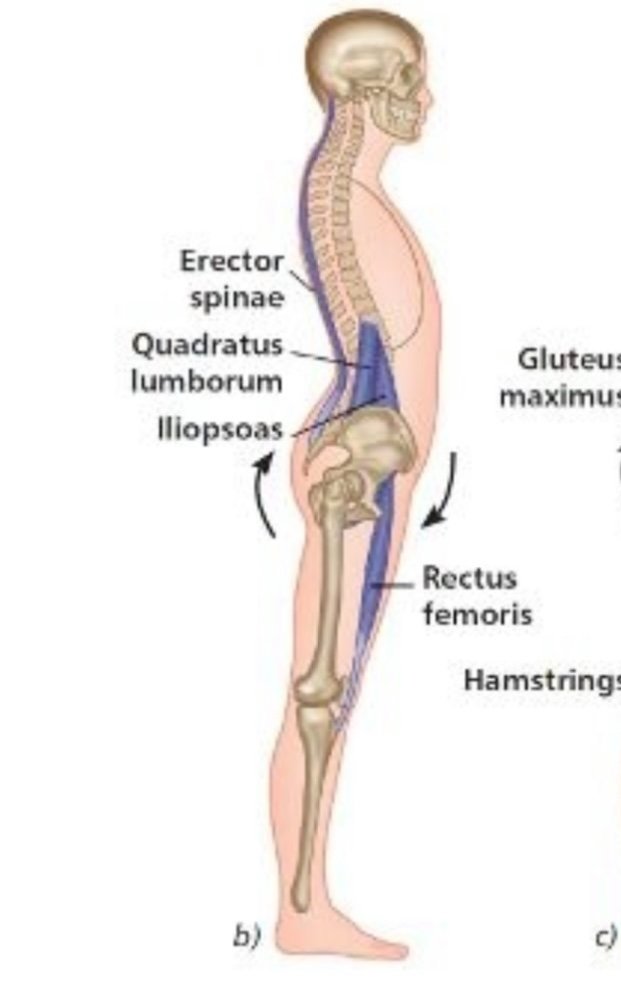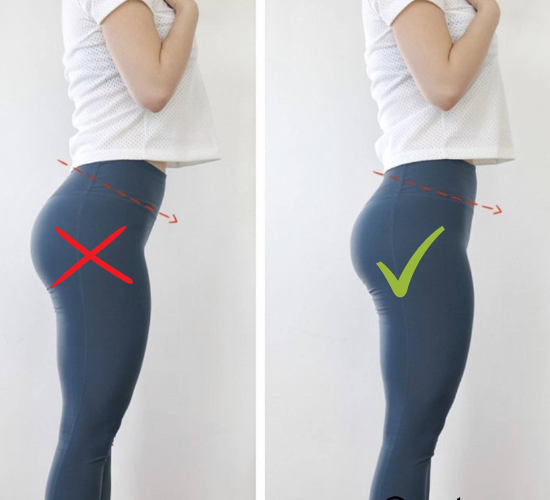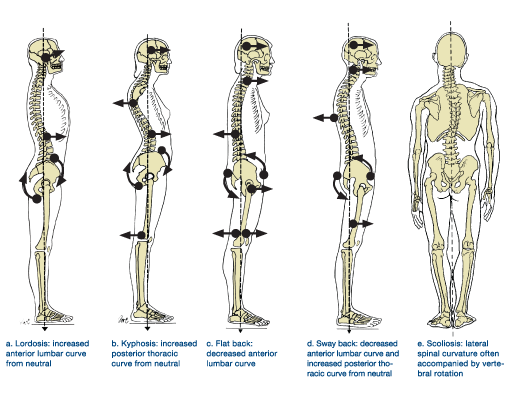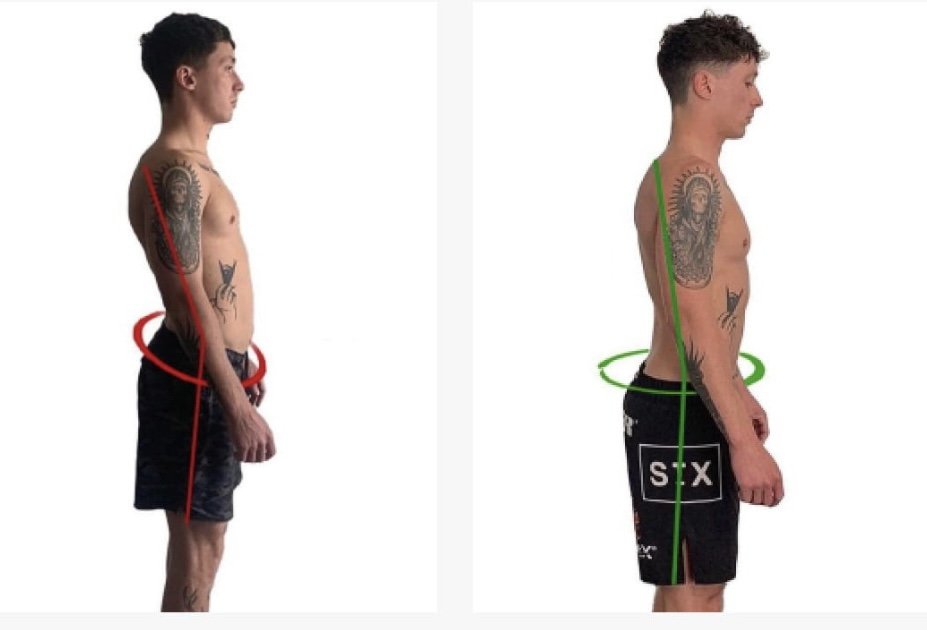Swayback Secrets: How To Fix Sway Back Posture & Lordosis So You Never Have Back Pain Again.
How do you fix swayback posture?
Having suffered back and neck pain for years, one morning I looked in the mirror and realised that my posture was wrong.
So I went to a Liverpool physio and a chiropractor but neither could help me correct my long-term posture so I started reading on this topic and these are the results.
Sway back posture is not an accident but a representation of several layers of compensation that the body has built up over time. People with swayback postures are often limited in many different types of ranges of motion throughout their entire body.
The other thing is that a swayback posture is not necessarily a bad thing unless you get pain. Its the bodies way finding a method to manage its own centre of gravity. Check out the image below.
If you look to the left, you can see that the more of a forward pelvis position, the more of a swayback posture you will present with.
Realigning the pelvis is the first piece of the puzzle, keep reading on how to do this.
Sway Back: Why Your Anterior Tilt is Causing Your Back Pain
I'll discuss how swayback posture develops and what tests indicate common swayback posture compensations. But most importantly, I'll provide you with exercises that will help you break free from the limitations of your current posture.
So what do these postures have in common? They're all just different methods of self-organisation of our spine curves, pelvic position, and limb positions so that we can keep a neutral centre of mass so we don't fall excessively forward or backwards.
The ability for humans to stand on two legs means that we are having to constantly balance our centre of mass and compensations like sway back posture and lower back pain can be a consequence.
We're unconsciously dealing with gravity all day, every day, and as a species concerned with survival, it makes sense that we self-organise our posture in a way that allows us to fight gravity the least.
Let's imagine what happens in terms of the sequencing of compensations. If we're originally biased towards a more "upright" posture, we may end up in a position of anterior pelvic tilt (see this in pictures below)
Often, the increased low back curvature (lordosis) of the lumbar spine will create a need to increase the upper back curvature (kyphosis) to keep that even centre of mass (this is how the S-shaped posture forms) But if we're really far forward relative to our centre of mass and sense our centre of mass off-balance, we have to rebel and "pull ourselves back" somehow, right?
We can accomplish this by squeezing our lower glutes and pelvic musculature, which will pull our pelvis underneath ourselves and round our low back so that me maintain stability and stop ourselves from falling too far forwards.
This is neither good posture nor bad posture but if you are someone who has chronic pain anywhere in the body, it's worth being aware of what posture type you are.
An anterior tilt causes the glutes and hamstrings to fail to prevent the sacrum or pelvis from being pulled forward during leg movement. As a result, the hip flexors overwork and pull on the front of the pelvis, leading to the lengthening of the abdominals and preventing them from stabilising the lower back. This creates excessive lumbar lordosis, thoracic kyphosis, and a forward head position, disrupting the balance of the spinal column. The body then compensates by attempting to maintain balance, leading to various types of pain, including back pain, neck pain, hip pain, knee pain, and shoulder pain.
You can see from the picture below that as we land on our heel when we walk, the glutes and hamstrings contract to maintain the pelvis position and this allows us to move efficiently. When we are in too much of an anterior pelvic tilt, this is unable to happen and pain develops.
Sway Back Posture: Finding Neutral
In this scenario, people typically seek help from a physiotherapist or chiropractor, who may provide temporary relief through passive treatments such as back cracking, massage, or acupuncture. However, these treatments only offer short-term benefits because they fail to address the underlying issue: reducing anterior pelvic tilt, promoting proper pelvis movement, and correcting sway back posture so you don't get low back pain or a stiff back and neck.
If you think you might have a swayback posture, there are a few common test results we'll see that are prevalent in these types of postures.
One of the most common results of the pelvic presentation is an active straight leg raise of 45 degrees or less. Those who have a swayback posture will not be able to open up the pelvic outlet and nutate the sacrum beyond 45 degrees. We'll also see limited hip internal rotation and limited shoulder flexion.
So what do we do about it and how can you support your spine?
In this case, we need to work in positions with lots of references. This means that our body is in contact with lots of external objects like the floor, wall, or table, providing stability and a sense of safety for the body to achieve the exercises. We need to work on breaking free from the limitations of our current posture, and I'll provide you with exercises that will help you do just that. Let's rebel against imposed postural norms and break free from the limitations they place upon us!
Exercises for Sway Back Posture
To summarise, having a swayback posture indicates compensation but it is not necessarily bad. Posture is not directly linked to pain, but it can cause movement limitations. Addressing the root cause, an unstable centre of gravity, is important by opening up joint positions and educating the system on how to feel safe in those positions. Trying the recommended drills, such as 3 sets of 5 breath cycles per drill per day for a few weeks, can improve the posture.










